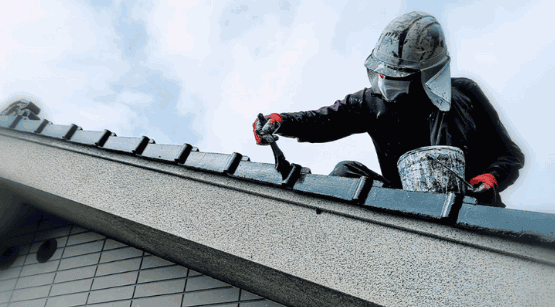
Roof painting is not merely a cosmetic enhancement; it represents a significant investment that can improve the aesthetic appeal of your home while providing essential protection for your roof against environmental elements. This article will examine the process of roof painting, the benefits it confers, and the various factors that influence its overall cost. Whether you are contemplating a do-it-yourself project or engaging the services of a professional, this discussion aims to provide valuable insights that will assist you in making informed decisions and potentially reduce expenses. Continue reading to acquire comprehensive knowledge regarding the considerations involved in painting your roof.
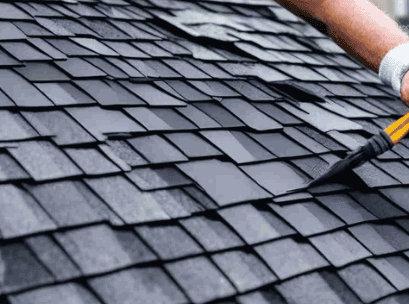
What Is Roof Painting?
Table of Contents
Roof painting is a crucial aspect of home maintenance that involves applying a protective and aesthetic coating to roofing materials, such as roof tiles or metal roofs. This process not only enhances the visual appeal of the property but also contributes to energy efficiency by reflecting sunlight and reducing heat absorption.
Homeowners often consider roof painting during renovations, which can range from traditional painting to advanced roof coatings designed to waterproof and protect against weathering. The choice of materials and techniques used for roof painting can significantly impact both the lifespan of the roof and the overall value of the property. When selecting materials, consider not only the initial painting costs but also the long-term benefits, such as energy efficiency and reduced need for repairs.
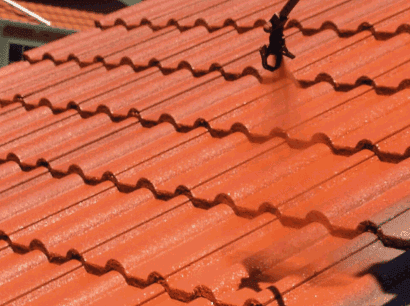
Why Should You Consider Painting Your Roof?
Painting your roof can have multiple benefits that extend beyond aesthetics, making it a worthwhile investment for homeowners. A freshly painted roof significantly improves the overall appearance of the home, increasing kerb appeal and potentially boosting property value.
Additionally, roof painting provides essential protection against weathering and environmental factors such as moss growth, which can lead to damage if left untreated. By choosing the right roof paint, homeowners can ensure their roofs remain in optimal condition for years to come.
Improves Aesthetics
Roof painting significantly enhances the aesthetic appeal of a property, making it more attractive to prospective buyers and visitors alike. This is especially relevant to those considering a renovation project, as the updated look can greatly enhance the overall value of a home.
By selecting the right colour and finish, homeowners can transform their roofs, creating a modern or classic look that complements the overall design of their homes. Whether you choose traditional roof tiles or more advanced roof coatings, the right choice can reflect your personal taste and improve the property's kerb appeal.
The influence of aesthetics extends far beyond mere appearance; it plays a vital role in determining home value and kerb appeal. Potential buyers often react favourably to well-planned colour schemes, which can emphasise the architectural features of a home. When choosing hues, it is essential to consider:
- Complementary Colours: Selecting shades that harmonise with the cladding and landscape enhances visual coherence.
- Quality Finishes: The right finish can elevate the look of roofing materials, ensuring they not only shimmer but withstand the elements.
- Durability: A smart choice in roof painting not only improves aesthetics but also offers protection against weather damage.
In fact, rejuvenating an older property through roof painting can breathe new life into its façade, attracting discerning buyers who appreciate a well-maintained exterior. This strategic improvement, paired with thoughtful landscaping and exterior touches, could significantly impact first impressions and long-term value.
Increases Property Value
Investing in roof painting can lead to a noticeable increase in property value, making it an appealing option for homeowners looking to enhance their investment. A well-maintained roof demonstrates care and attention to detail, which can attract buyers in a competitive property market. According to experts from the National Federation of Roofing Contractors, a good quality roof paint application can significantly extend the lifespan of your roof.
Research indicates that properties with well-preserved roofing systems can see an increase in value of up to 15% or more, especially when potential buyers are considering the ongoing maintenance costs associated with home ownership. A fresh coat of paint not only improves aesthetic appeal but also adds a layer of protection against the elements, which can prolong the lifespan of the roof itself.
In a recent case study, a homeowner who invested approximately £5,000 in roof painting reported a resale value increase of £30,000, illustrating the efficacy of this strategic investment. The correlation between roof condition and property value cannot be overstated; buyers often perceive a well-painted roof as a sign of overall property integrity.
- Enhanced curb appeal
- Increased energy efficiency
- Extended roof longevity
Ultimately, by choosing to paint the roof, homeowners not only enhance their property's aesthetics but also bolster its marketability, yielding significant returns on their investment.
Protects Roof From Damage
One of the primary benefits of roof painting is its ability to protect the roof from various forms of damage, including weathering, moss growth, and moisture infiltration. By applying a high-quality roof coating, homeowners can effectively waterproof their roofs, extending their lifespan and reducing the need for costly repairs.
These protective coatings act as a formidable barrier against extreme temperatures, ultraviolet radiation, and biological growth, all of which can severely compromise the integrity of the roofing structure. Over time, the absence of such protective measures may lead to premature ageing, resulting in cracks, leaks, and ultimately a hefty financial burden for repairs or replacements.
- Ignoring roof care can allow debris accumulation, which retains moisture and encourages mould growth.
- Failure to address minor issues often escalates into significant problems that require extensive, invasive repairs.
- Professional roof painting not only enhances the appearance of a home but also provides necessary resistance to environmental threats.
Thus, investing in professional roof services is essential to safeguarding one’s property and ensuring long-term durability and performance.
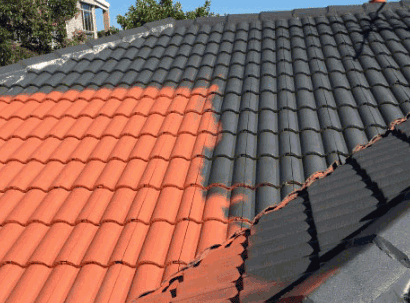
Factors Affecting The Cost Of Painting A Roof
The cost of painting a roof can vary significantly based on several factors, which homeowners should consider when planning their renovation budget. These factors include roof size and pitch, the type of roofing materials used, and the condition of the roof prior to painting.
Furthermore, professional expertise, labour costs, and the chosen materials for the job also play a crucial role in determining the overall price.
Roof Size And Pitch
The size and pitch of a roof are significant determinants of the cost of painting, as larger and steeper roofs typically require more materials and labour to paint effectively. Professional contractors often charge based on the total area that needs to be covered, making these factors critical considerations during the planning phase.
For instance, consider a roof measuring 232.26 square metres with a pitch of 12:12. This steep incline not only increases the difficulty of accessing every angle but also necessitates a greater volume of paint due to overspray and dripping. In contrast, a flat roof of the same area might require less material due to its accessibility and lower likelihood of paint loss during application. Engaging professional services, like can help mitigate these challenges, ensuring optimal efficiency and cost-effectiveness.
The choice of paint can vary according to roof dimensions and incline. A high-performance, thicker paint may be optimal for steep roofs to withstand the elements, but it comes at a higher cost. As a result, budget planning should take into account:
- Roof size
- Pitch and accessibility impact
- Material selection based on performance
- Labour costs due to complexity of the job
To summarise, accurately estimating costs requires a careful evaluation of these elements, which directly influence both the resource allocation and the total expense incurred during the painting project.
Look into: Is Roof Spraying Worth It
Type Of Roofing Material
The type of roofing material significantly impacts the overall cost of painting, as different materials have varying requirements for preparation and application.
For instance, asphalt shingles, metal roofs, and tiles each necessitate specific products and techniques, which can affect both the price and the durability of the finished result. Products like Climashield™ and Smartseal are popular options that offer robust protection against weathering and moss growth.
When considering roofing materials, it is essential to understand how they influence not only the aesthetic appeal but also the financial aspect of painting projects. Different surfaces require tailored approaches:
- Asphalt shingles: These roofing types often require a primer to ensure proper adhesion, which could increase material costs.
- Metal roofs: Due to their slick surface, a specialised metal-friendly paint and sometimes additional labour for preparation are necessary, raising the overall expense.
- Tile roofs: If your choice is tile, the unique texture demands more effort in applying paint evenly, further driving up costs.
Understanding these factors can help homeowners make informed decisions that balance quality and budget in their roofing projects.
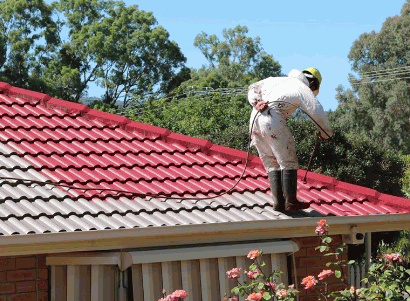
Condition Of The Roof
The existing condition of the roof is a crucial factor in determining the cost of painting; roofs that require repairs or significant preparation work will incur higher costs before the painting process can even begin. Homeowners should assess their roof's condition prior to painting to avoid unexpected expenses.
Evaluating the roof's integrity not only influences financial planning but also impacts the longevity and effectiveness of the paint job. Ignoring necessary repairs can lead to more severe issues down the line, potentially damaging both the roof and the home’s interior.
Here’s a checklist of common issues to inspect:
- Leaks: Check for any signs of water damage or leaks.
- Tile Condition: Inspect for missing, cracked, or curled tiles.
- Granule Loss: Look for excessive granule loss on asphalt tiles.
- Moss or Algae: Identify any growth that might require treatment.
- Flashing Issues: Ensure that flashing around vents and chimneys is intact.
Addressing these concerns ensures that the roof is not only ready for painting but also protects the investment in the property overall. For instance, Ellie Rimmer and James Lawrence, experts from the UK, recommend regular inspections to avoid costly repairs.
Number Of Coats Needed
The number of coats required for a successful roof painting project directly affects the overall costs; typically, more coats mean higher material and labour expenses. A professional assessment can help determine the appropriate number of coats based on the current condition and desired finish of the roof.
When considering the number of paint layers, it is essential to recognise how varying finishes and the existing state of the roof can influence this decision. For instance, a smooth surface generally requires fewer layers, while a textured or weathered roof may necessitate additional coats to achieve a uniform appearance. Assessing the roof's condition helps ensure both aesthetic appeal and durability. Consulting with professionals affiliated with the Paint Research Association can provide valuable insights.
- Pros of Multiple Coats:
- Enhanced durability against weather elements.
- Improved colour vibrancy and depth.
- Better concealment of imperfections.
- Cons of Multiple Coats:
- Increased costs for materials and labour.
- Longer drying times between layers.
- Potential for peeling if not applied correctly.
While layering provides benefits, a thorough inspection can help evaluate the necessity of multiple coats, ensuring an effective balance between quality and cost.
Labour Costs
Labour costs are a significant part of the overall expense of roof painting, as skilled professionals who handle the installation may charge varying rates based on their experience, location, and the complexity of the project. Homeowners should factor in these costs when budgeting for roof painting services.
Understanding the nuances of labour expenses across different regions can greatly influence the decision-making process. For instance, contractors in urban areas may command higher fees due to increased demand and the cost of living, while those in rural settings might offer more competitive pricing.
Moreover, the contractor's expertise plays a crucial role; specialists in high-quality materials or unique architectural styles may set premium rates. To strike a balance between quality and affordability, homeowners should consider the following strategies:
- Researching local contractor rates through reviews and referrals
- Obtaining multiple quotes to compare pricing and services
- Evaluating the experience level of the contractors to understand the value they provide
By carefully assessing these factors, homeowners can ensure they receive a fair price without compromising on the quality of their roof painting project.
Additional Services
Additional services such as cleaning, repairs, and priming can add to the overall costs of roof painting, but they are often necessary to ensure a successful and long-lasting finish.
When embarking on a roof painting project, homeowners should recognise the significance of these processes not only as a means to enhance aesthetic appeal but also to maintain structural integrity.
Proper surface preparation through cleaning is critical, as it removes dirt, mould, and debris that can hinder paint adhesion. Using primer on unpainted roofs or repairing damaged sections helps achieve a smooth and even application, ultimately prolonging the roof's lifespan. Evaluating these aspects can lead to better budget planning, potentially saving costs on future repairs due to neglect.
- Cleaning: Essential for achieving good adhesion.
- Repairs: Addressing issues before painting prevents further damage.
- Priming: Enhances paint durability and finish quality.
Each of these components contributes not only to the immediate visual improvement but also ensures optimal performance and longevity of the roof system, making them wise investments in the overall maintenance strategy.
What Is The Average Cost Of Painting A Roof?
The average cost of painting a roof can range from £400 to £4,500, depending on various factors such as roof size, type of materials, and prevailing market rates.
For instance, a three-bedroom house typically falls within this price range. Homeowners should seek quotes from professionals to get a clearer picture of the potential costs involved based on their specific circumstances.
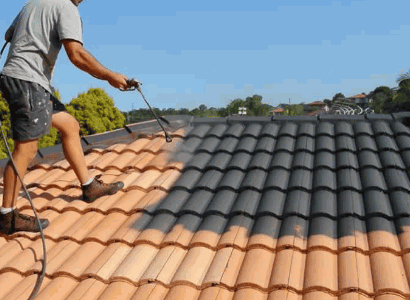
DIY Vs Hiring A Professional
Regarding roof painting, homeowners often face the decision of whether to undertake the project themselves (DIY) or hire a professional contractor. While DIY projects may save on labour costs, they require significant expertise, and the right materials, and can pose risks if not executed properly, making hiring a professional a compelling option for many.
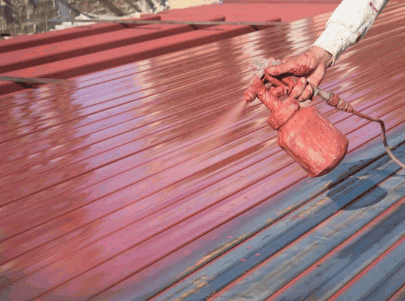
Pros And Cons Of DIY Roof Painting
Undertaking a DIY roof painting project offers several benefits, including cost savings and the satisfaction of completing the work yourself, but it also presents challenges such as safety risks and the potential for substandard results without professional expertise.
Homeowners considering this endeavour will find that DIY roof painting can significantly reduce financial outlay compared to hiring professionals. This approach not only allows individuals to save on labour costs but also enables them with a sense of accomplishment when successfully transforming their space. According to a study published in April 2022, DIY projects can save up to 30% of the total costs.
There are important factors to consider:
- Skill Level: The complexity of roof painting can vary greatly, requiring a good understanding of techniques and materials.
- Safety Risks: Working at heights poses inherent dangers, and precautions must be taken to mitigate accidents.
- Time Commitment: DIY projects often require more time than anticipated, which can lead to frustration.
While there are tangible economic benefits, potential DIYers should thoroughly assess their capabilities and the risks involved to ensure a successful outcome.
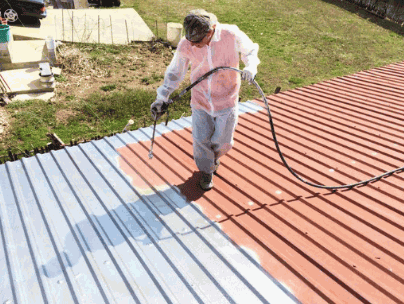
Benefits Of Hiring A Professional
Hiring a professional for roof painting comes with numerous benefits, including the assurance of quality workmanship, access to specialised materials, and valuable expertise that can lead to a more durable and aesthetically pleasing finish. Many professional services offer warranties, providing homeowners with peace of mind.
In contrast to DIY approaches, opting for professionals not only ensures optimal results but also prioritises roof safety. Experienced painters are equipped with the right tools and techniques, enabling them to navigate heights and slippery surfaces effectively. By utilising industry-grade materials and advanced methods, such as Smartseal products, they can enhance the longevity of the paint job, ensuring that it withstands the elements for years to come.
The efficiency gained from hiring experts means that projects are completed in a timely manner, saving homeowners from the hassle of prolonged disruption.
- Enhanced quality and aesthetics
- Access to specialised tools
- Long-term cost savings on repairs
- Satisfaction through warranties offered
All these factors culminate in a smart investment that pays off in durability and visual appeal, making it a wise choice for any homeowner.
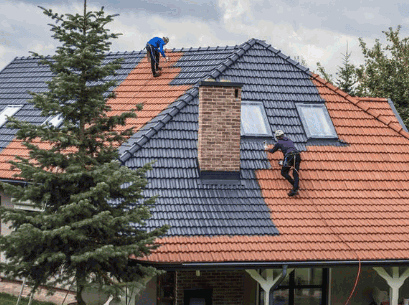
How To Choose The Right Roof Painting Contractor
Selecting the right contractor for roof painting is vital to achieving the best results, and homeowners should consider factors such as experience, customer reviews, and obtaining multiple estimates to gauge market rates. A well-chosen contractor can make a significant difference in the quality and longevity of the roof paint application.
When embarking on this journey, it’s essential to ensure that the contractor possesses the necessary credentials and licensing, as this demonstrates a commitment to industry standards and regulations. Begin by:
- reviewing online testimonials from previous clients, which can provide insights into the contractor's work ethic and reliability.
- It’s also beneficial to request references that can help assess their dependability and quality of service.
- Looking for contractors with a solid background in roof painting specifically ensures that they have the specialised knowledge required for optimal results.
Consider contractors affiliated with the National Federation of Roofing Contractors for additional credibility. Always ask about their warranty and insurance coverage, as these elements are pivotal in safeguarding your investment and maintaining peace of mind throughout the process.
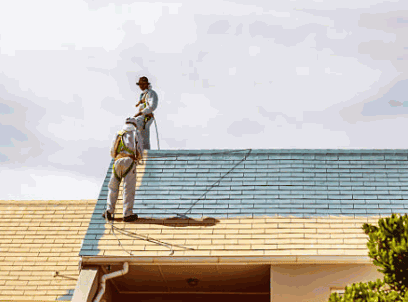
How To Save Money On Roof Painting Costs?
Homeowners looking to save money on roof painting costs can explore various strategies, ranging from DIY approaches to budgeting effectively for professional services. Checking platforms like Facebook Marketplace for deals on materials and tools can also help reduce costs.
By planning ahead and prioritising essential tasks, such as cleaning and repairs, homeowners can reduce overall expenses while ensuring a successful painting project.